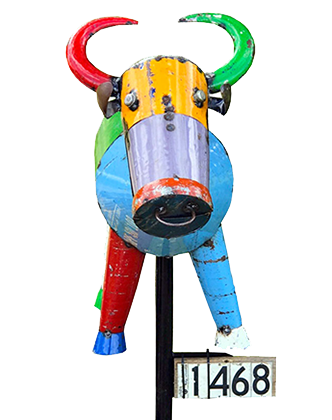In this blog we’re continuing the many and varied things to do around Devonport Tasmania and other towns close To Glencoe B&B, such as Sheffield.
Communication – From the signal station and mast in the grounds of the Bass Strait Maritime Centre to the bells, semaphore, Morse code, Aldis lamps and other maritime navigational aids, highlights the collection and the advances in technology from flags to current electronic systems.
Shipwrecks – The formal European history of the Bass Strait began with the wreck of the Sydney Cove, a ship laden with rum bound for Sydney.
Matthew Flinders’ first journey into the area was aboard one of the salvage vessels. The wrecks increased as European activity increased and as Melbourne boomed.
The Devonport-built SS Orion, the largest steamship built in Tasmania and the flagship of the famous Holyman line simply disappeared without trace in 1908.
Artefacts from the collection tell the story of the “Ships Graveyard” in the Bass Strait.
Naval History – The story of local hero Teddy Sheean, a farm labourer from Latrobe who served on the HMAS Armidale, is the focal point for the naval stories and memorabilia exhibited.
The Bass Strait Maritime Centre houses artefacts, stories, and research materials for the geographic region bound by the township of Don in the West to Port Sorell in the East and Latrobe in the South, range from the early 1800s to the current day.
Mersey Bluff Lighthouse
The Mersey Bluff Lighthouse standing at the mouth of the Mersey River near Devonport is unusual in Australia with its distinctive vertical red striped day mark. It is a stunning lighthouse and one of the ‘must-see’ things to do around Devonport Tasmania.
The Mersey Bluff Lighthouse was constructed in 1889 by P Davern under contract to the Hobart Marine Board.
It is of brick construction on a stone base. The lightstation originally included two brick houses, a signal shed, tide house and flagpole.
Following conversion to automatic operation in 1920 and with the houses being sold to the Devonport Municipality in 1922, the houses were demolished in 1958 and 1961 respectively.
The current tower replaced a succession of beacons and obelisks that had formerly stood on the site.
It also replaced the earlier Don River light. In 1910 the original kerosene lamp was converted to acetylene gas which was supplied by a Colt seven-day acetylene generator.
The light was converted to DC electric operation in 1920 with an acetylene burner as a back-up light source. The light was de-manned at the same time.
Mains power was connected in 1978. The lighthouse retains its original Chance Bros fourth order lantern.
The lighthouse stands on top of the bluff to the western side of the mouth of the Mersey River in Tasmania north of the Port of Devonport.
The establishment of the lighthouse ended a history of wrecks in this area. The Commonwealth assumed responsibility for the lighthouse under the Commonwealth Lighthouse Act in 1915.
It is unusual for an Australian lighthouse to have vertical stripes as its day mark. Another unusual feature of this light station is that it was connected to town water in 1901.
Home Hill
Home Hill is a look into the family life of Tasmania’s only Prime Minister. The home of Australian Prime Minster Joseph Lyons and Dame Enid Lyons.
At Home Hill, you can go behind the scenes of their public lives. Joseph Lyons (1879-1939), a schoolteacher born in Stanley, was Tasmania’s Premier in 1923-28 and Australia’s 10th Prime Minister 1932-39.
Dame Enid Lyons (1897-1981) was the first woman elected to Federal Parliament, as a Member of the House of Representatives in 1943.
She was also the first woman to serve in federal cabinet as part of the Menzies Government in 1949-1951.
Home Hill was built in 1916 and was extended over the years to house the Lyons’ eleven surviving children.
It survives with a large collection of original furnishings and contents, and provides an unexpected insight into Australian political and family life during the mid-20th century.
Home Hill was the centrepiece of a 4.5-hectare property, containing 2 hectares of apple orchard.
Entered via the original drive, the now 2-hectare property retains the core of Dame Enid Lyons’ original garden, including roses and garden ‘rooms’ defined by hedges.
Home Hill is open for guided tours on Wednesday, Thursday, Friday, and Saturday – bookings are preferred. Just some of the many things to do around Devonport Tasmania.
For more of our blogs, click here.



